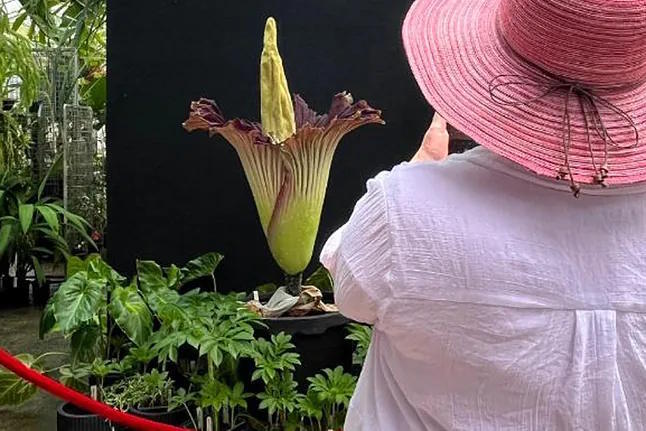There are events that are worth the wait, and in the world of botany, the spotlight is on the 'corpse flower'. A huge specimen of this plant has opened its petals for the first time in 15 years, as reported by Efe. The flower is on display this Sunday at the Australian National Botanic Gardens in Canberra, where hundreds of curious onlookers have gathered.
As explained by the garden on its Facebook page, the blooming started on Saturday night and will last until Monday, by which time the visit reservations have been fully booked.
This is an 'Amorphophallus titanum', known as the 'corpse flower', a species that takes seven to 10 years to bloom, although this time it took 15 years to reach a height of 135 centimeters, to open its corolla and release the foul odor it is known for.
This giant ring, also known as 'bunga bangkai', smells like rotting flesh and produces the largest and smelliest floral spike or inflorescence in the world, after which it withers.
This exhibition in the Australian capital comes just two weeks after a flower of the same species opened its corolla at the Sydney Botanic Gardens, where thousands of visitors were also attracted by the putrid smell.
The 'bunga bangkai' is native to the tropical rainforests of Sumatra, Indonesia, and is endangered due to deforestation in its natural habitat.
The 'corpse flower' in Canberra.Australian National Botanic Gardens
It is identifiable by its huge yellow spike, which can exceed two meters in height, and its foul odor, which serves to attract pollinating insects such as flies that seek corpses to lay their eggs.
Once the inflorescence begins to appear, it grows at a rate of 10 centimeters per day until reaching an average height of 2.50 meters, approximately 1 meter in diameter, and weighing 75 kilograms.
In countries like Germany, Belgium, or Brazil, the blooming of the 'corpse flower' has also been recorded in recent years, while in Australia, one of these openings was witnessed in 2015 in the city of Melbourne.
